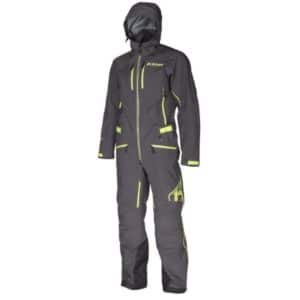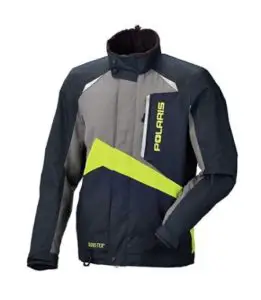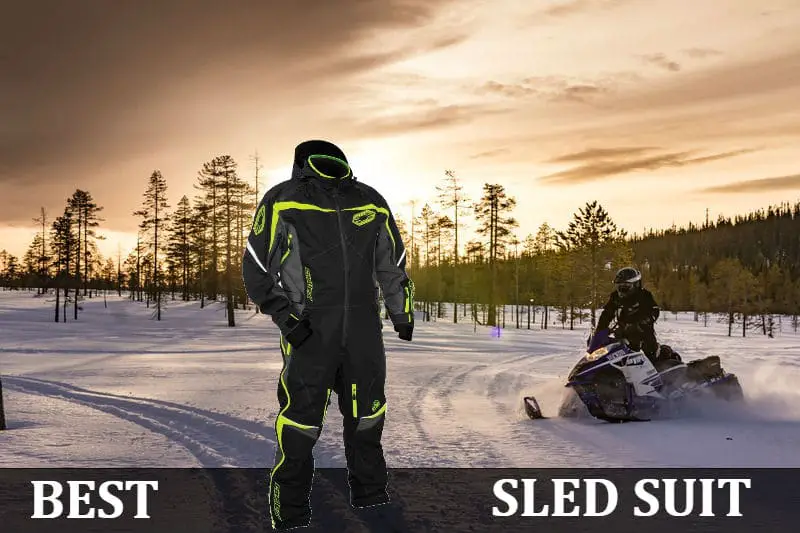Introduction
Why do you need a good snowmobile suit? Unless you are reading this from your cozy glacier or were born in Finland, we could all agree on one thing: Winter is chilly. And no amount of clothing will be of use to you if not chosen properly. Of course, I am not here to tell you what to wear on those cozy winter days when doing whatever, no. If you have read any of my previous articles, you should know that I am a sucker for winter sports.
Snowmobiling is, of course, one of my favorites. And what better way to love a sport than to help others prepare for it properly? Hi there, it’s your boy here, bringing you more wisdom on everything snowmobile. Today’s topic: what are the best snowmobile suits out there?
If you’re in a hurry, here they are. But I advise you to read all the details so you can choose the best suit for your needs.
All links are from Amazon.com, you check the current price on Amazon by clicking the links below:
Besties:
Snowmobile suit for Women
Snowmobile suit for Kids
- iXtreme Boys’ Snow Mobile (Boys)
- iXtreme Little Boys Snowmobile (Boys)
- Pink Platinum Girls’ Snowmobile Snowsuit (Girls)
Common rookie mistakes
It is almost natural for someone who gets drawn into any hobby to skip on properly pulling the sleeves of others for help. There is no shame in admitting this, but there is also none in doing it. Even if it is for relatively ”small” matters, such as picking the perfect suit. There are some bad apples out there, but all in all, most practitioners of any sports out there will lend you a hand.
5 steps
 When shopping for a snowmobile suit, there are five steps you should follow:
When shopping for a snowmobile suit, there are five steps you should follow:
-
Pick clothes purposefully made for this job
Despite winter being only one queen, there are many outfits that we are presented with for this occasion. There are everyday winter clothes, clothes for each winter sport, winter-fashionables and so on. Remember, although many of them will look the same, most are actually unfit for the job. The best course of action will be for you to invest in proper snowmobile gear. And although costly at times, it is not limited to only that.
-
Choose the right size
It is an aspect skipped by many. Regardless of how much or little you spend, if it doesn’t fit, you’re going to have a bad time. Make sure to always have your measurements ready if shopping online.
Always keep in mind that whatever you invest in, you will have to make sure not forget about the other layers. This will be explained thoroughly later in the article. Essentially, when buying a jacket and if you can try it, do it with all the layers you will wear underneath. This will give you an idea of how you will feel during the tracking sessions and comfort ultimately is a must.
-
Look for the comfortable ones
 Although this is thoroughly explained in the next section, you will never go wrong with something that is breathable and element-resistant. However, comfort is not limited to just how it feels on your skin. To be comfortable, one must also make sure he/she will remain completely dry and warm. For this to happen, you will have to invest in everything protection related with good breathability. And such things will cost a premium. But ultimately, they are made to last and unless you don’t take them on a trip through Razor-Town, they will last you.
Although this is thoroughly explained in the next section, you will never go wrong with something that is breathable and element-resistant. However, comfort is not limited to just how it feels on your skin. To be comfortable, one must also make sure he/she will remain completely dry and warm. For this to happen, you will have to invest in everything protection related with good breathability. And such things will cost a premium. But ultimately, they are made to last and unless you don’t take them on a trip through Razor-Town, they will last you.
Fortunately, such things don’t come separately. Waterproof clothing will usually present wind-stopping capabilities. This is how you kill 2 mockingbirds with just one snow globe.
Another little quirk you should look for is ventilation junctions. The more, the merrier. The idea is to let you regulate your own heat by allowing air to flow/stop.
-
Apply for quality over price reduction
All clothes are all equal, but some are more equal than others. Even within the same brand, you will often see many discrepancies between virtual garbage and heavenly providence. And you will always (mostly) get what you have paid for.
The idea is that this hobby ain’t cheap. Once committed, you will have to make amends with what you have bought, as it will be yours for a very long time. And if so, why not invest in something that will last?
-
Choose function, not fashion
Wanting to look good is understandable, but other than with a few selfies, what will fashion help you with? And all of that in the middle of bloody nowhere?
Remember, selfies don’t matter when your frozen body will be found somewhere around the middle of spring.
Follow the three-prong rule
 The best way you make sure that you stay warm and dry on your sled trip is by layering. This is done by adhering to the ”three-prong rule”. This rule represents three layers of clothing worn on top of each other, each with its specific task and function. Think of it as with a medieval knight dawning his armor. First, you have the cloth padding, then the chainmail and then the plate mail. You will be like a snowy (k)night. Get it?
The best way you make sure that you stay warm and dry on your sled trip is by layering. This is done by adhering to the ”three-prong rule”. This rule represents three layers of clothing worn on top of each other, each with its specific task and function. Think of it as with a medieval knight dawning his armor. First, you have the cloth padding, then the chainmail and then the plate mail. You will be like a snowy (k)night. Get it?
This one rule applies mostly to the torso and the legs. Winter socks and gloves are made specifically for you not to have to wear three of them at the same time. And helmets are no different than that. For more on helmets, you should go and read my previous article regarding them.
Inner or base layer
The closest layer to your body. The main purpose of it is to provide comfort. It is usually made from soft materials that function both as an insulator and for comfort purposes.
Furthermore, the inner layer draws sweat from the skin and transfers it to the outermost layers. This process is called wicking and it will result in an added comfort to you, due to it evaporating faster.
For those purposes, this layer is usually made from:
Wool: The best of the best. Next to silk, it is the most pricey of the inner layer materials and this is for good reasons. It is not only a great insulator, but it also possesses phenomenal water-repelling properties. For my East-European readers, you might remember the image of shepherds running around with wool cloaks, even during summer.
That is because wool not only protects you from the outside cold, but it is also water-repellant. Furthermore, wool will both keep you warm during cold days and chill during warm ones. Truly a wonder material. Furthermore, it is easy to clean and is odor resistant. This one I highly recommend and you should buy into wool if your pocket permits.
Silk: The most expensive one of the bunch. Silk possesses a great deal of thickness to warmth ratio, making it an excellent choice for layering. Furthermore, it feels very nice when in contact with your skin to its silky (no-pun-intended) texture. Speaking of texture, it is highly malleable, meaning that you can wear it under anything without it even showing. However, you will shed tears of anguish if it tears apart, as repairing it will cost you a little too much.
Cotton: The go-to for many riders who wish to keep in touch with nature but can’t afford wool. It is very affordable, making it the go-to choice for many riders who don’t want to invest much in clothing. It will also provide you with a fair bit of warmth and comfort.
But this is where its nastiness rears its ugly head. You see, cotton absorbs moisture and sweat very easily and is also very slow to dry. Furthermore, when wet or damp, it will lose most of its protective abilities, leaving you highly vulnerable to the chilling cold. Thus, it is a peril for you in the cold and should be avoided at any costs.
Synthetic materials: With all those wonderful, but expensive materials (except cotton), riders have gone to a new kind of town. And it is made from a wide variety of effective synthetic materials. The most common of them are polyester, polyethylene, and microfiber based fabrics.
Due to being mass-produced specifically for this, you will get something that is both good and cheap. Also, because of this, they provide very powerful water-wicking properties that can be treated chemically with relative ease. This means that you can get anti-bacterial, anti-odor and anti-insect finishes. The anti-odor is a must, as they become stinky very fast without it.
Always remember that a proper inner layer will transfer your sweat to the mid layer with ease. If not, that is not an actual inner layer, but a very comfortable mid layer piece of clothing. The inner layer should always be tight and leave no gaps for air to flow freely.
Mid Layer
 The mid layer is required to reinforce the inner layer and to provide additional insulation. Due to its intended purposes, the mid layer should always be a bit more loose-fitting than the inner one. You need this in order to let the air flow in between them to help transfer the sweat away from you. But the greater the distance between them, the more ineffective the capillary action will be. For those unfamiliar with it, the capillary action if what moves the sweat away from your skin to the upper layers.
The mid layer is required to reinforce the inner layer and to provide additional insulation. Due to its intended purposes, the mid layer should always be a bit more loose-fitting than the inner one. You need this in order to let the air flow in between them to help transfer the sweat away from you. But the greater the distance between them, the more ineffective the capillary action will be. For those unfamiliar with it, the capillary action if what moves the sweat away from your skin to the upper layers.
It is usually made from the following:
Wool: A true wonder material, I have already spoken about it. Good heat and cold insulation, moisture resistant, odor resistant and all in all the best choice. Quite expensive though.
Cotton: Already talked about it. Avoid it as it is a material best used for summer clothing and not for winter sports.
Fleece: out of all of the materials talked about, this is the most balanced. I simply cannot determine if it is better than bad or vice versa. On one hand, the material used for its creation is synthetic polyester polar fleece. This means that it is highly comfortable and most importantly, affordable. Its soft-napped fabric provides a great deal of warmth and insulation. Furthermore, the said fabric is made so that it can manage moisture very efficiently. One leads to another and as such, it allows for a great deal of ”breathability”. It is also very quick to dry so that you will not have to free to death in the middle of nowhere.
However, its disadvantages can be catastrophic, seeing as how it is weak to the two things that it should protect you from. Namely, water and wind. Ironic, isn’t it? With the exclusion of the Windstopper Freece, they are very vulnerable to water and wind and the two are usually intertwined. At least it dries quickly.
Disadvantages aside, water and wind protection are what the top layer is made for. Many experienced riders consider it the perfect mid-layer material and recommend it wholeheartedly.
Down: the silk of the mid layer section. It is slim, very comfy, has a nice warmth-to-weight ratio, takes very little room and is overall practical. Regarding its downsides, there are many more of them. I always avoided it and so should you when snowmobiling. It is expensive, dries slowly, loses its insulating capacity when compressed and stops lofting when washed multiple times. Best avoid it.
Synthetic Fiberfill: made from polyester fiber, it is a watered-down version of down. It is less expensive and provides better insulation when wet and dries relatively quickly. However, it has a considerably worse warmth-to-weight ratio and it absorbs very little moisture. Avoid it also and go for the good ones.
Top or shell layer
The top layer, or as it is known by riders, the shell does what it says it does: it protects. But it will do so only if it is made from a material specifically designed to stop the elements. You should go for anything that effectively stops water and wind from entering and which has good mechanical strength. But don’t be fooled, as it also has to be made from a breathable material, as to allow the moisture to exit it.
However, the current market doesn’t offer any perfect material for this task, although only to a degree. This means that you will have to juggle between breathability and wind/water resistance.
There are two types of shells: soft and hard.
Soft shells are when the top layer is made from a breathable material. This will allow for better circulation of air and moisture but will leave you vulnerable to wind/water. Choose soft shells when you think you will sweat a lot.
Hard shells are the complete opposites of the soft shells. They lack in the breathable department, but oh boy do they make up with wind and water resistance. And you will need as much wind protection as possible at 60 miles per hour. Best used for snowmobiling, where the engine does most of the work so you won’t sweat away.
There are three types of shells:
Plastic raincoats: will completely protect you from water and wind, but they leave no moisture through. Not much to say on them.
Waterproof breathable: You know them, you love them. The real hard shells, they will be your best friends when snowmobiling. Due to the cutting and chilling wind encountered while riding, the thick, hard-shell will be a must-have.
They are waterproof due to a thin porous membrane that blocks water but allows through your evaporated sweat. They are also moderately breathable, however the more expensive they are, the more breathable they become.
Water Resistant: The true soft shell, they are best when tracking through the snow on your own legs. This is due to them being just partially wind and water resistant and also relatively thin. Avoid them if you’re planning on snowmobiling.
Where to buy from
With more and more people trying out snow sports and with higher demand, many more companies are popping up left and right. And with more competitors come higher quality and cheaper prices #capitalism101. This means that you will be left with a wide array of manufacturers to choose from. The idea is that the best manufacturers now try to sell you pretty much the same thing.
This is a very good thing, as they have all reached a point where the materials are top-of-the-line and their quality is beyond good. They are also constantly innovating and improving so that you can only expect better quality products in the coming years.
The following brands are the bad boys of the market and make the best all-around winter clothing. Jackets, winter socks, pants, boots, gloves, layers, helmets, and even balaclavas. You name it, they’ve got everything you need for a proper snow trip. Other than the logo, some flashy colors and patterns and random price reductions here and there, all are a good choice. And remember, it is either pricey or dicey.
All links are from Amazon.com, you check the current price on Amazon by clicking the links below
Besties:
Snowmobile suit for Women
Snowmobile suit for Kids
- iXtreme Boys’ Snow Mobile (Boys)
- iXtreme Little Boys Snowmobile (Boys)
- Pink Platinum Girls’ Snowmobile Snowsuit (Girls)
Conclusion
Properly entering an expensive hobby like snowmobiling is an endeavor that will test even the most seasoned of us. But if you have read my previous articles on snowmobiling, you know how much emphasis I place on personal safety. Never skimp on your health and integrity for the purpose of saving some money. And choosing a proper full snowmobiling suit, although a daunting task, is indeed a necessary task.
